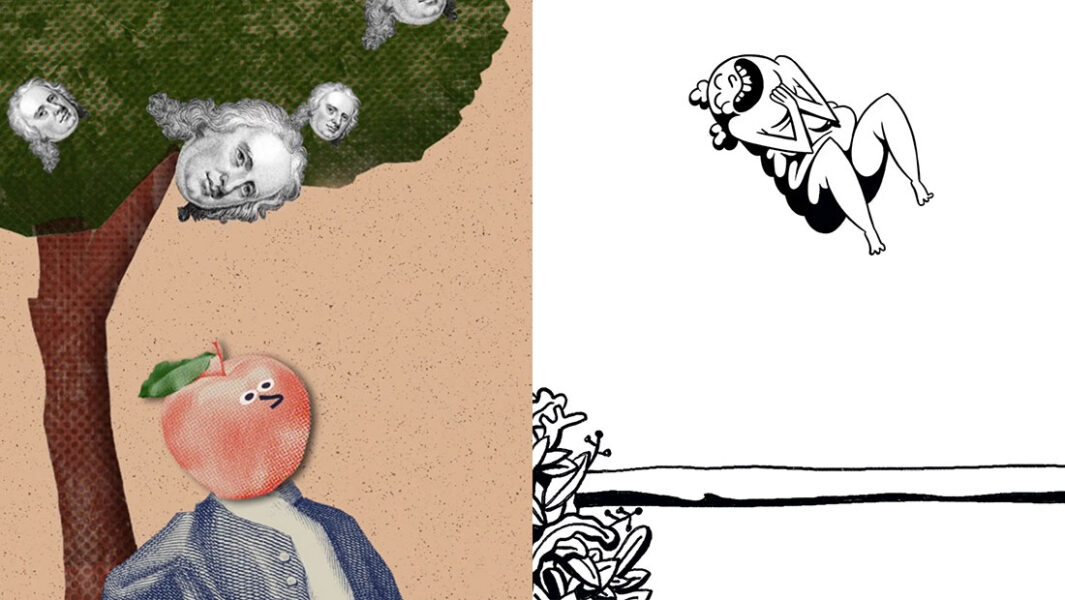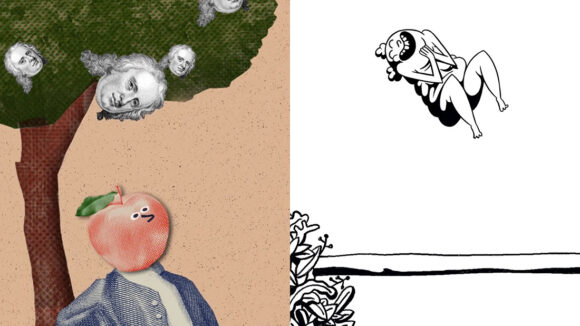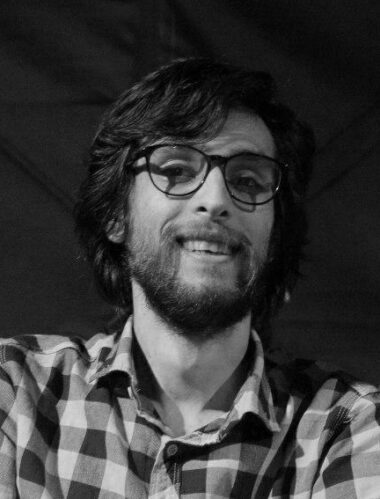

39 Iranian Animators Teamed Up To Create The Dizzying Conceptual Short ‘Knock Knock’ (Exclusive Premiere)
At a time of geopolitical crisis, a new Iranian animation project serves as a model of collaboration and international outreach.
Thirty-nine Iranians, an American, and a Russian have joined forces to create Knock Knock, an exuberant anthology of three-second animation clips. You can watch the film, which Cartoon Brew is exclusively premiering, below:
The project is the brainchild of Kasra Yazdani, an animator and designer with seven years’ experience in the industry. After cutting his teeth at various studios, Yazdani went independent two years ago to concentrate on his own films. The difficulty of focusing on a solo project is what made the prospect of an anijam so appealing, as he tells Cartoon Brew below.
The brief was simple: each animator had three seconds to animate something entering a square frame, hitting a surface, then exiting through the bottom. The artists took this format and ran with it, in all kinds of directions: Knock Knock contains pop art pastiche, political satire, exercises in abstraction, superhero homages, and more, animated in a variety of mediums.
Iran’s animation industry made headlines last year when, for the first time, it submitted a feature to the Oscars: The Last Fiction. The film, an epic tale of mythological derring-do, spoke of the country’s growing production capacities. Knock Knock showcases something else entirely: the sheer creativity of animators in (and outside) the country. In the interview that follows, Yazdani tells us how the project came together, and appraises Iran’s animation scene.
When did you come up with the idea for this project, and why?
One night when I was listening to a podcast, I heard about an installation exhibition with almost 90 individual artists, in which every one of them made a 1×1×1-meter cube. Although I should say I never found any pictures or videos of that event.
This whole thing happened [at a time when] I was trying to make a short animation by myself, but I was so busy running unrelated errands! So that’s when the idea struck me to make a small two- or three-minute exhibition with a number of really short artworks. The idea of how one subject affects the thoughts of a group of artists was really tempting to me.
How did you choose the participating animators?
It was important to me to set aside my preferences so the project wouldn’t get narrowed down with my choices. I wanted the outcome to be something more flexible for the audience to see. In this project we have a vast variety of animators who are involved in different aspects of this industry, like experimental works, advertising, or feature films.
In Iran, we don’t have [enough] studios specialized in animation to cover all of the animators. So most of the well-known animators are freelancers. Animation in Iran began long before the Islamic Revolution, more than 40 years ago. We do have veterans who are still working, but most of the good ones, who kind of lead by a more modern point of view, are among the younger generations. For example, a group called Animation Experiment is currently working in Iran to introduce audiences to non-mainstream types of animation.
Did you give them any instructions apart from what’s mentioned in the introduction?
The frame’s size had to be 1080×1080 pixels. I suggested that using the square aspect ratio is a great tool to tell your story with more honesty in it, so the audience doesn’t get trapped in unnecessary details.
How many of the animators are Iranian, and where are the non-Iranians from?
We have 40 artworks done with 41 artists. At first, three guest artists were supposed to be involved in this project, but one of them withdrew for personal reasons. Due to time limitations we had to replace him with an Iranian animator. So there are two foreign artists from America and Russia, five Iranian artists who are living abroad, and 34 Iranian animators who are living here in Iran.
What are the biggest strengths of the Iranian animation industry today, and the biggest challenges it faces?
In my opinion, the biggest strength of Iranian animation is the diversity that we witness throughout the works. At this moment the number of animations that have their own unique voice is growing by the day.
About the challenges: [while] a huge amount of budget [is] wasted on the disgraceful works conducted by major film studios supported by the government and the official media of the country, those individual artists who really deserve the financial support to work on their art with a clear mind don’t really receive any help from the government, or even the private sector. So artists here need to get day jobs in order to fund their art projects. The landscape of show business in Iran is so different from what people recognize as a dynamic industry.
The profile of Iranian animation is growing overseas — The Last Fiction is a good example. Is this having a tangible impact on the animation industry in the country?
I worked for a year-and-a-half in the studio that produced [The Last Fiction]. A lot of hard-working and talented individuals had their part in the production of this film; we should acknowledge their effort. But I think we have yet to see an animated feature with respectable qualities. Though if you search through the work of independent filmmakers in Iran, you’ll always find something worth to watch. [They] don’t have a big platform and it’s hard for them to make their voices heard.
Here is a list of the participating artists in Knock Knock with links to their Instagram profiles:
- Pedram Taghavi
- Alireza Naghizadeh
- Hamid Sohrabi
- Hamed Hosseinzadeh
- Faeze Sepehrsadeghian
- Golrokh Hemmati
- Aghil Hosseinian
- Golnaz Moghaddam
- Ali Abbasnia
- Vera Pozdeeva
- Parastoo Kardgar
- Arman Alipour
- Ali Bitaraf
- Mahsa Abbasi
- Fatemeh Jazebi
- Hossein Firouzi
- Bahram Moghadam
- Amin Haghshenas
- Mahmoud Mokhtari
- Masoud Moradi
- Sara Sadeghzadeh
- Babak Arjmand
- Saber Hemmati
- Mehran Iranloo
- Tina Bahraei
- Sajjad Sabour
- Amir Saharkhiz
- Nairy Eivazy
- Hadi Tabasi
- Mehran Mehrabi
- Jamal Rahmati
- Armita Akhavan
- Mohammadjavad Rostami
- Kyle Martinez
- Hojjat Azampour
- Hesam Mokhber
- Kasra Yazdani
- Javad Ayat
- Sogol Sanagoo
- Amir Kazemi
- Azin Dashti
The interview was conducted by email, and has been lightly edited for clarity.


